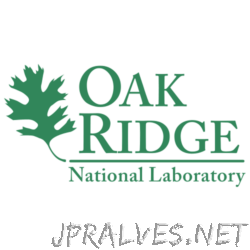Other
News Researchers use commercial quantum computer to identify molecular candidate for development of more efficient solar cells

“Using the full capabilities of the Quantinuum H1-1 quantum computer, researchers from the Department of Energy’s Oak Ridge National Laboratory not only demonstrated best practices for scientific computing on current quantum systems but also produced an intriguing scientific result …

“Warming a crystal of the mineral fresnoite, Oak Ridge National Laboratory scientists discovered that excitations called phasons carried heat three times farther and faster than phonons, the excitations that usually carry heat through a material. “Neutrons were ideal for exploring …

“Critical Materials Institute researchers at Oak Ridge National Laboratory and Arizona State University studied the mineral monazite, an important source of rare-earth elements, to enhance methods of recovering critical materials for energy, defense and manufacturing applications. Rare-earth elements occur together …

“From carbon fiber to concrete and bamboo, additive manufacturing—the industrial term for 3D-printing—utilizes many different materials and techniques. And now, with a significant need for decarbonization and alternative supply chains for converting raw materials into finished products, 3D-printed …

“Using existing experimental and computational resources, a multi-institutional team has developed an effective method for measuring high-dimensional qudits encoded in quantum frequency combs, which are a type of photon source, on a single optical chip. Although the word “qudit” might …

“Oak Ridge National Laboratory researchers are developing a first-of-its-kind artificial intelligence device for neutron scattering called Hyperspectral Computed Tomography, or HyperCT. The fully automated, AI-driven platform can rotate a sample in almost any direction, eliminating the need for human …

“Scientists at the Department of Energy’s Oak Ridge National Laboratory used neutron scattering to determine whether a specific material’s atomic structure could host a novel state of matter called a spiral spin liquid. By tracking tiny magnetic moments …

“Researchers at Oak Ridge National Laboratory and Korea’s Sungkyunkwan University are using advanced microscopy to nanoengineer promising materials for computing and electronics in a beyond-Moore era. Historically, computers have become faster and more powerful by Moore’s Law, an …

“Oak Ridge National Laboratory researchers used the nation’s fastest supercomputer to map the molecular vibrations of an important but little-studied uranium compound produced during the nuclear fuel cycle for results that could lead to a cleaner, safer world. The …

“Researchers at the Department of Energy’s Oak Ridge National Laboratory used polymer chemistry to transform a common household plastic into a reusable adhesive with a rare combination of strength and ductility, making it one of the toughest materials ever …

